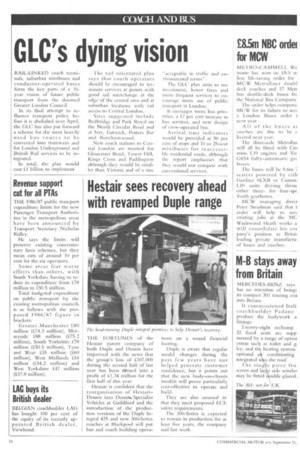GLC's dying vision
Page 16

If you've noticed an error in this article please click here to report it so we can fix it.
RAIL-LINKED coach terminals, suburban minibuses and conductor-operated buses form the key parts of a 10year vision of future public transport from the doomed Greater London Council.
In its final attempt to influence transport policy before it is abolished next April, the GLC has also put forward a scheme for the most heavily used bus routes to be converted into tramways and for London Underground and British Rail services to be integrated.
In total, the plan would cost £1 billion to implement. The rail orientated plan says that coach operators should be encouraged to terminate services at points with good rail interchange at the edge of the central area and at suburban locations with rail access to Central London.
Sites suggested include Redbridge and Park Royal on the North Circular Road and at lver, Gatwick, Potters Bar and B o re h a ni wood.
New coach stations to Central London are mooted for Gloucester Road, Tower Hill, Kings Cross and Paddington although they would be smaller than Victoria and of a size "acceptable in traffic and environmental terms".
The GLC plan aims to use investment, lower fares and more frequent services to encourage more use of public transport in London.
It envisages more bus priorities, a 17 per cent increase in bus services, and new design of crew-operated bus.
Arrival time indicators would be provided at 50 per cent of stops and 15 to 25-seat ininibuses for inaccessible residential roads, although the report emphasises that they would not compete with conventional services.




































































































